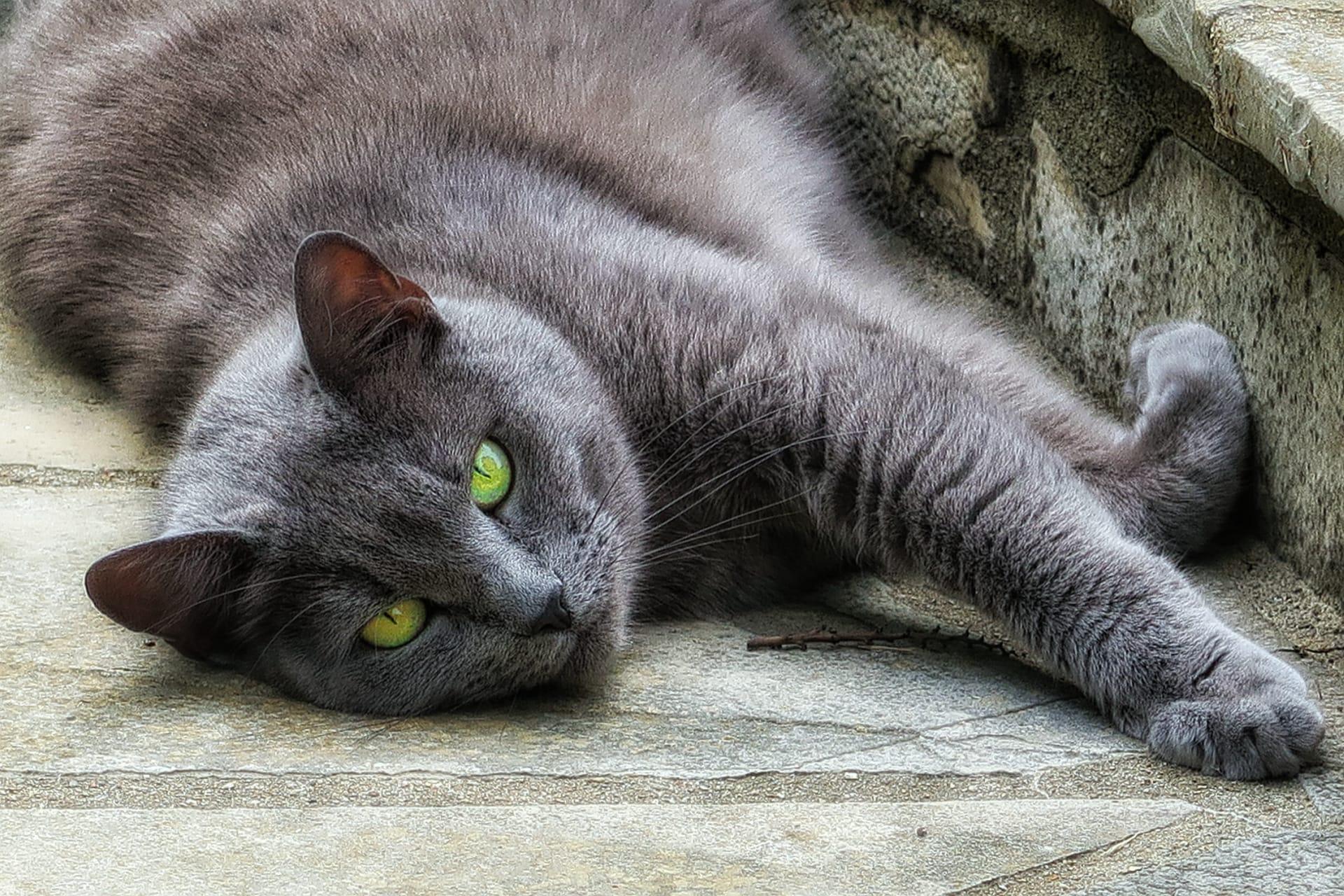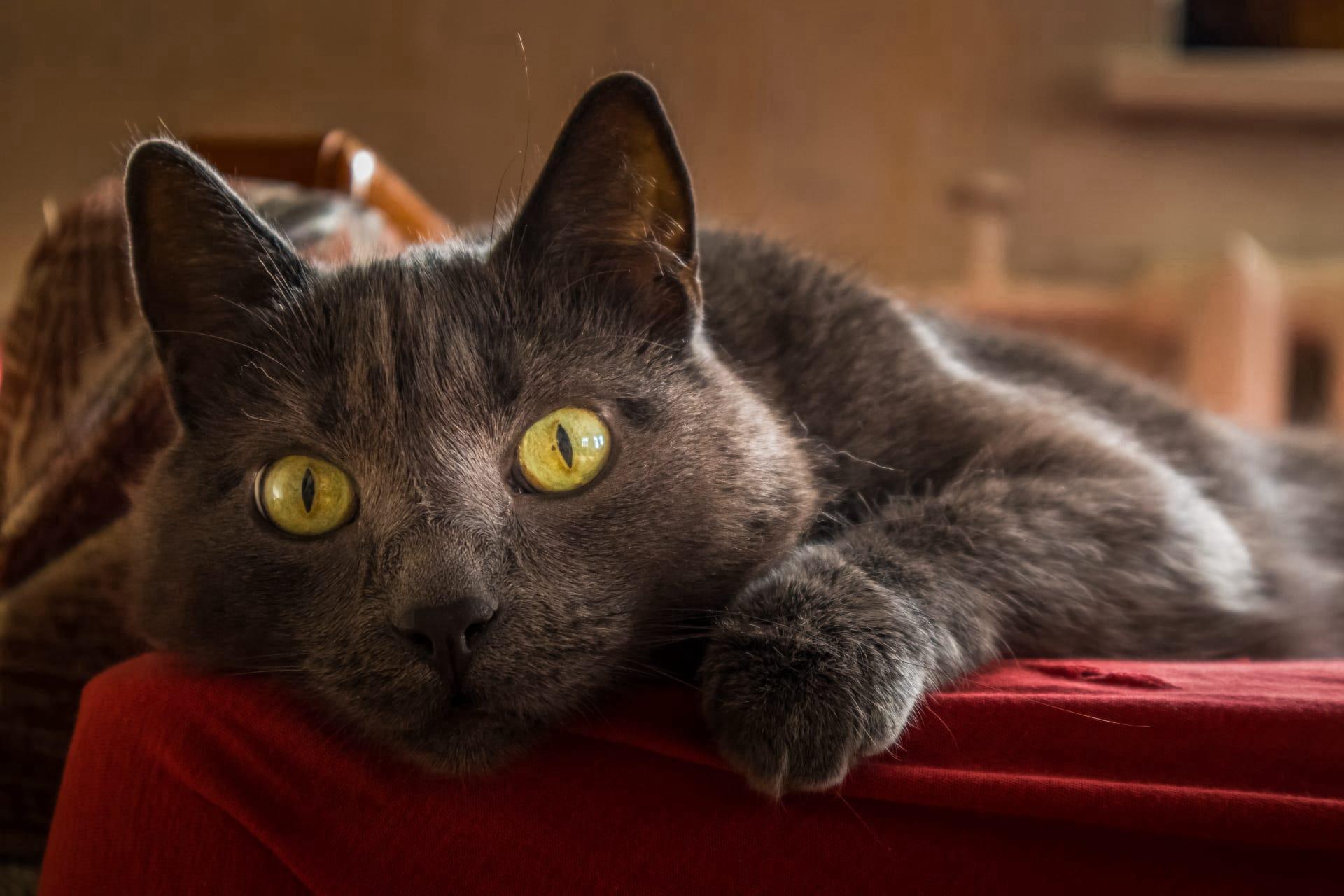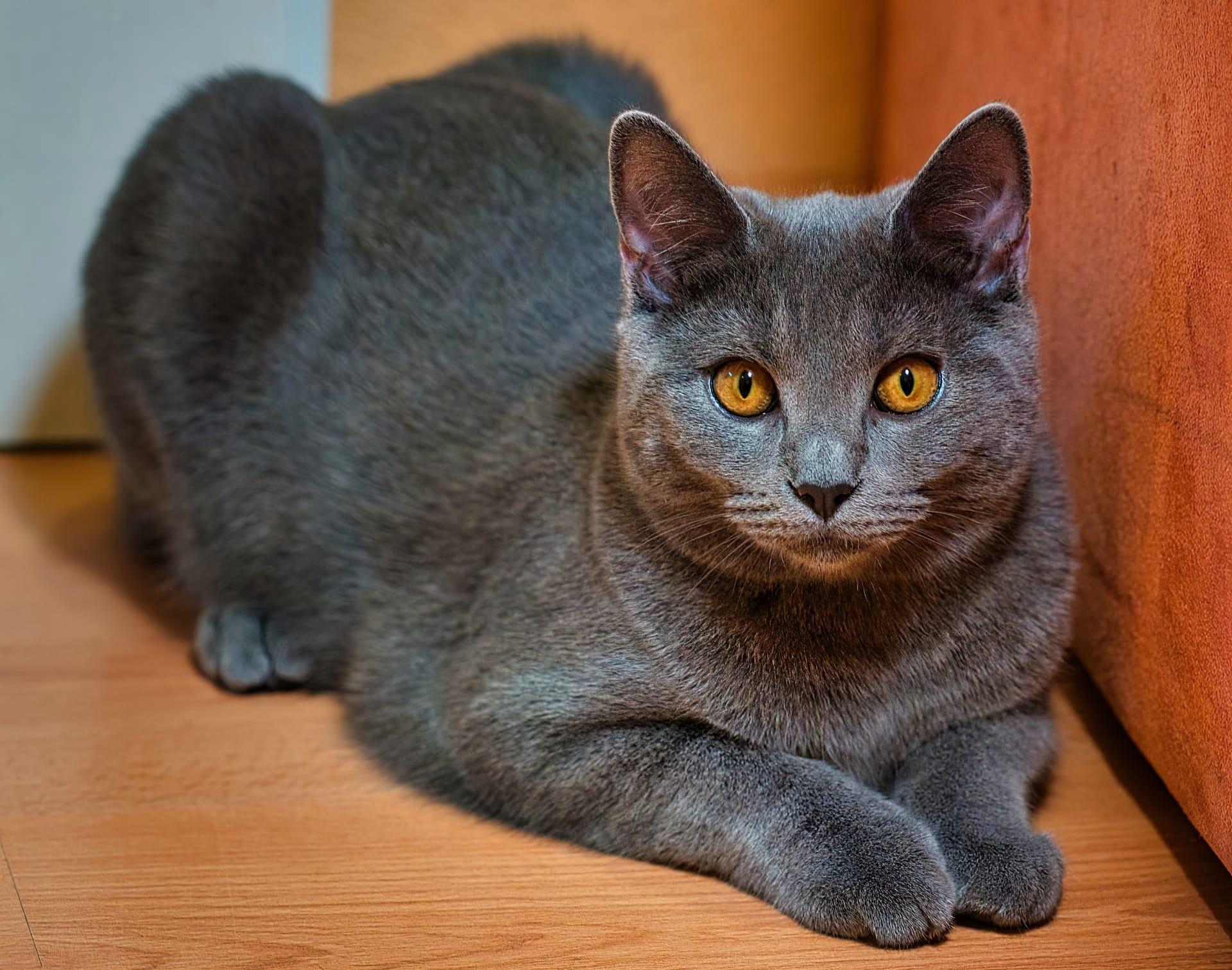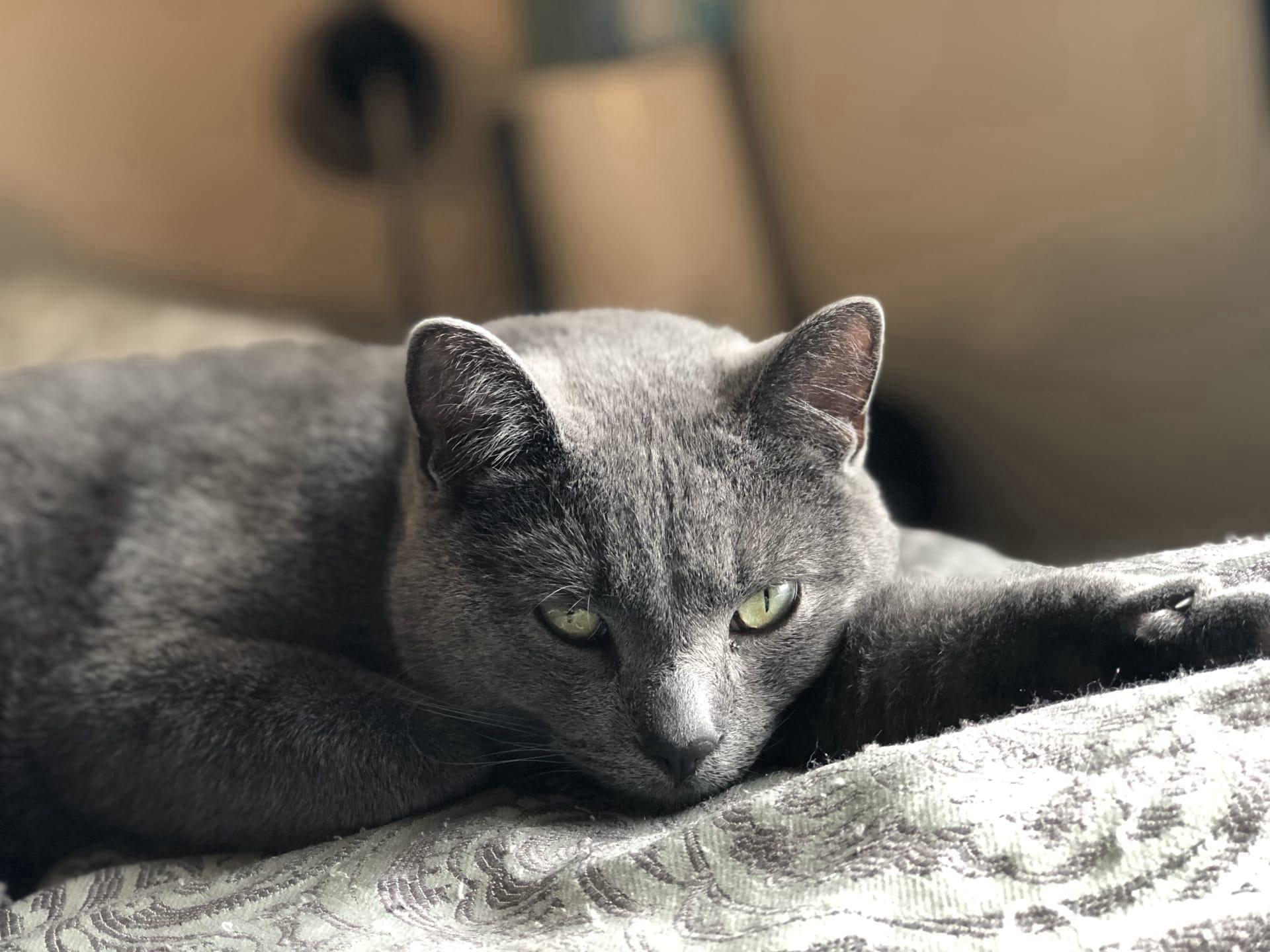Russian Blue Cat Characteristics
- Home /
- Mini Encyclopedia /
- Animal /
- Russian Blue Cat Characteristics
1
The Russian Blue Cat boasts an elegant, medium-sized frame, with adults typically weighing between 7 to 15 pounds. Their bodies are long and slender, showcasing a fine-boned structure with well-developed muscles, giving them a graceful yet powerful appearance. The coat is their most remarkable feature: a dense, plush, short hair that feels incredibly soft to the touch. It's the combination of the double coat and the silver tipping that gives the fur a shimmering blue appearance, unique to this breed. Their lifespan is notably long for cats, with many living well into their late teens or even early twenties with proper care.
The Russian Blue's most distinctive organ is undoubtedly its eyes. From a young age, they possess a vivid green hue, which only becomes more striking as they mature. These almond-shaped eyes are not just a visual treat but serve a critical purpose. The brightness and clarity of their eyesight are exceptional, aiding in their adept hunting skills. This keen vision allows the Russian Blue to notice and react to even the slightest movements, making them excellent predators of small prey and playful companions at home.

2
Question: Why do Russian Blue Cats have such a distinct coat color and texture?
Answer: The unique coat of the Russian Blue Cat is the result of a combination of genetic factors and careful breeding practices. Their fur is short but exceptionally dense, made up of a double coat that traps air and provides insulation. This not only makes their coat soft and plush to the touch but also gives it a silvery sheen that makes the blue coloration stand out more vividly. The specific gene responsible for the blue-gray color is a dilution of the black gene, combined with a unique silver-tipped effect that reflects light, creating their signature shimmering appearance.

3
Russian Blue Cats are known for their agility and grace, often described as moving with a stealthy and elegant gait that mirrors their wild ancestors. They enjoy climbing and jumping, showcasing their powerful hind legs and lithe bodies. Despite their active nature, they are not overly demanding of attention and can entertain themselves with toys, making them perfect for families with a busy lifestyle.
When it comes to eating habits, Russian Blues are often quite particular about their food. They tend to prefer high-quality, meat-based diets and can be quite sensitive to changes in their food type or schedule. This breed is known for its good manners at mealtime, eating slowly and moderately, which helps maintain their sleek physique. Owners should be mindful of their diet to prevent overfeeding, as this breed can be prone to obesity if not monitored closely.

4
The Russian Blue Cat thrives in a stable, indoor environment where they can feel safe and loved. They are particularly sensitive to changes in their routine or living conditions, making them well-suited to quiet, consistent households. Their need for a tranquil environment does not mean they shun company; in fact, they form strong bonds with their family members and can become quite affectionate and loyal pets.
In terms of reproduction, Russian Blues are known for their selective breeding traits. They reach sexual maturity between 10 to 12 months of age but often do not breed until they are a bit older, ensuring they are fully mature. Litters typically consist of 3 to 5 kittens, which inherit the breed's distinctive plush coat and vivid green eyes. Breeders value Russian Blues for their gentle temperament and strong maternal instincts, making them excellent mothers and companions.

5
Book: "The Graceful Russian Blue" explores the history and characteristics of the Russian Blue Cat, focusing on its development in Russia and its spread to other countries. Written by English author Felicity Green in the 1980s, this book delves into the breed's lineage, distinguishing physical and behavioral traits, and offers advice for prospective and current owners on care and training. Green's comprehensive guide has become a valuable resource for enthusiasts and breeders alike.
Book: "Silver Shadows: The World of the Russian Blue," published in the United States during the 1990s by renowned cat expert Martin Davis, provides an in-depth look at the Russian Blue Cat. Davis covers everything from the breed's mysterious origins in the Russian port city of Archangel to its rise in popularity across Europe and America. The book includes chapters on health, diet, breeding, and showing Russian Blues, making it an essential read for anyone interested in this elegant cat breed.